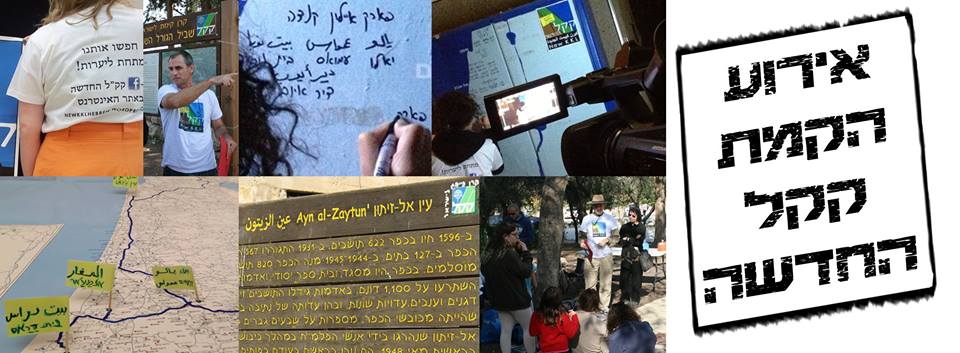(This text was published on September 2013 in a special website and was the begining of New KKL project that evolved to an exhibit at Zochrot from March to May 2014)
The title refers to AB Yehoshua’s novella, “Facing the Forests” (1), which I somehow only got around to reading a couple of weeks ago. Ever since then, I can’t stop thinking about it and about what the Jewish National Fund (JNF – KKL) – the organization I’m heading – is doing with these forests. It is so sad that in the story, only after the Arab worker burns the JNF forest, it exposes what’s buried beneath it. Why must it be that way? Why not simply acknowledge what we’ve done, destroyed and covered up? Yehoshua has his worker’s tongue cut off, but ours is intact and we must use it to say out loud: Sixty-five years ago there was an entire culture here that we have destroyed to establish a Jewish State, whose ruins are covered by KKL forests.
A close friend of mine with whom I shared these doubts suggested I read Noga Kadman’s Erased from Space and Consciousness (2). When I started reading it, it felt like tasting the forbidden fruit, or peeking into a forbidden room. This book is written in a precise, academic and thin language, even somewhat dry, but it told me things that shook my world. Kadman shows that both the JNF and the NPA show complete disregard for some 80% of the Palestinian villages located in the territories under their responsibility. This is true of their signs, pamphlets and online information. I now call these villages Palestinian, but in fact, the KKL never calls them that. If they are mentioned at all, they are mostly nameless and referred to as part of 1948 battle stories – sometimes they are mentioned as harboring “Arab gangs” – they are part of the natural landscape, a milestone along a trail across our country (3). Occasionally, “structures from the Ottoman period” are mentioned, without stating that these were actually houses in a Palestinian-Arab village (4).
I searching closer to home and soon enough, I was shocked to discover that KKL employee in charge of signposting had already admitted to this, in public. In an interview for Our Land of Israel in June 2008, she said: “Actually, a great part of our parks are on lands that were Arab villages, and the forests are a cover-up” (5). Had I kept track of all interviews with KKL employees, perhaps I would have been better informed and arrived at my new insights years ago.
Michal’s other statements in the same interview are more cautious and apologetic, but this is more than understandable given our policy. When asked how come JNF intends to post signs stating which Arab villages used to be located in what is today the Ayalon-Canada Park, she confirms: “The signs indicating the Arab villages and the refugees were [sic] came to be through a court order after the ‘Zochrot’ association filed a request. The signs will be posted within the next two weeks and will immortalize [sic] the villages Dir Iyov, Imwas and Yalu that were destroyed in ’48 and ’67. Two-thousand people lived there, and we mention that those people now live in Jordan and Ramallah…. We have no choice but to carry out the court order. Since in the past the signs were destroyed, we must put them up again and add the details: the names of the villages and the state of those that lived there. Don’t worry – we will not post them in prominent places. They didn’t request the signs to be in Arabic, and they will be in Hebrew only…. We didn’t write that we drove them out, we didn’t state that they live in refugee camps. All we wrote is where they live. I would suggest not publicizing this in the media, as it is a very sensitive issue. It is best for the goal not to arouse [sic] this at all” (6).
You bet it is sensitive! Because of that sensitivity, we have been making all these efforts to cover the “issue” up. I am also happy that in the new sign we posted at Canada Park, the name Dayr Ayyub is written properly, not like the Hebraized “Dir Iyov” in Our Land of Israel.
The distortion of place names, which is routine when it comes to Arab locales in Israel, is also evident in the historic variations of this village’s name. Long ago, this used to be a Roman town called Emmaus, as emphasized by KKL’s old sign, posted in the Park for many years before the new sign required by the court order.
As a rule, we seem to be very interested in the country’s Roman past, and it’s Jewish past of course. Its Arab history, however, has been buried and plastered, covered and concealed.
Back to Michal Katorza, who later on in her interview alludes to what I’m doing here now. When asked whether KKL intends to post signs memorializing other villages in other parks, she replies: “There is definitely a possibility that this will spread to the rest of the country; this is a phenomenon that will probably not be able to be stopped [sic]” (7). I couldn’t agree more: it is impossible to stop the exposure of the country’s Palestinian history, and it is neither appropriate nor moral to keep stopping it.
Former minister Ruhama Avraham Balila also confirmed in a Knesset debate that “The purpose of the signposts is to give information about the Arab settlements at that place, without connection to the current residence of the residents of the abandoned villages. KKL, which manages the park, is not allowed to oppose the placing of signposts since this is an edict, after an appeal to the Supreme Court”.
Indeed, at the time, following the appeal to the High Court of Justice, we had no choice but agree to post the signs as requested.
The acknowledgement I am declaring today belongs to a glorious tradition I am proud to join. Public admission of guilt is not a weakness – quite the opposite: it expresses the human desire for reconciliation. Leaders who have ignored the suffering they have caused to other nations and human groups have come to recognize that it is impossible to seek reconciliation and true peace without acknowledging the crimes their nations have perpetrated.
In November 2010, Serb leader Boris Tadić asked the Croatians for forgiveness for a massacre perpetrated by Serbs in 1991, which they had previously refused to acknowledge: “I came here (to the site of the massacre in Vukovar, Croatia) to share words of apology; to express our sympathy; to create the possibility for Serbs and Croats, Serbia and Croatia, to turn a new page in history.”
In November 2009, Australian Prime Minister Kevin Rudd admitted in a speech in parliament crimes perpetrated by his country for decades against some half a million Forgotten Australians, assigned between the 1920s and 1970s to foster care without their consent. “We come together today to deal with an ugly chapter of our nation’s history and we come together today to offer our nation’s apology. To you, the Forgotten Australians and those who were sent to our shores as children without their consent … we are sorry. Sorry that as children you were taken from your families and placed in institutions where you were so often abused, sorry for the physical suffering, the emotional starvation, and the cold absence of love of tenderness of care. Sorry for the tragedy, the absolute tragedy of childhoods lost, childhoods spent instead in austere and authoritarian places where names were replaced by numbers.”
Some may question the relevance of my referring to atrocities perpetrated by other nations to JNF’s attempts at concealing certain aspects of Israel’s history. I have no intention of comparing the various atrocities, but only to indicate the similarity in attempts to deny them in different times and places.
To offer one more recent example, several weeks ago we were told that the British government acknowledged its crimes against Mau Mau fighters in Kenya and would even compensate them financially. “The British government recognises that Kenyans were subject to torture and other forms of ill-treatment at the hands of the colonial administration”, said Foreign Secretary William Hague in parliament. “The British government sincerely regrets that these abuses took place and that they marred Kenya’s progress towards independence.”
These are but a few examples attesting to a growing trend of colonial and other nations who have come to recognize that no morally sound future is possible so long as the crimes of the past continue to be denied. It is time we too acknowledge what is here, right underneath the surface, what is never mentioned in Israeli maps and signs: the Palestinian Nakba. As a leading organization in the Zionist effort to “make the wilderness bloom”, we must now lead the change and start showing everyone that lie buried underneath the green forests planted by the KKL are the remains of an entire living culture wiped out in 1948.
In fact, several KKL officials are keenly aware of this urgent need. My colleague Amiram Riklis tells me that he expressed this view in a meeting held in January 2008: “I think that in maps and historic signs it is relevant to say that such and such towns and villages were conquered. Why not say it? [...] In each KKL site where a historic sign is posted, with details about the place’s past, we must also refer to that history”. In that meeting, Amiram asked for a list of all Arab villages captured by Israel in 1948 in order to “distribute it to all districts, all areas, so that when they intend to post a new sign, they will have that list at hand”.
So if this was already discussed and agreed in early 2008, why was nothing done? Well, right-wing politicians began pressuring the KKL, claiming that we are collaborating with hostile elements. We panicked, I admit. We issued urgent apologetic communiques. Zvi Li-Dar, our Head of Communications, was forced to clarify that the KKL would not post any signs referring to the destroyed villages in any of the sites under its responsibility. Thus, right-wing pressure brought us to the absurd situation in which the JNF is prevented from posting signs commemorating the Jewish history of places in Israel because it fears legal actions demanding signs commemorating Palestinian history as well, just as in Canada Park.
An angry letter I received from a lawyer, Arie Geva, raised my attention to the weird situation that had resulted from this approach of ignoring the existence of Palestinian towns and villages. JNF’s “cowardly” position, he argued, is that if signs referring to events in Jewish history but ignoring the country’s Arab history are posted, they will be exposed to legal action forcing them to do so, and therefore they tend to avoid “dealing with the issue” in the first place.
In a public statement by Adv. Li-Dar, he confirms that “it has been suggested that in every KKL site where a sign is posted with details on the place’s history, the village name will also be added. There are only six such sites in Israel”. Even this has not been done to date.
I therefore decided to take matters into my own hands and rewrite five signs as suggested. In the aforementioned meeting in KKL, Riklis mentioned Ein Ayala and Ayn Ghazal as examples, and that’s where my journey began. Below is the old sign that has been there for years, which ignores the village which has given Ayala Range (Shluhat Ayala) its name. (8)
As of the day before yesterday, the New KKL sign looks completely different.
This was the first new sign I posted and I admit – my hands were shaking. This oppositional act was more than just physical. The body which knew what was right for it, what it had learned in the past and became used to, found it difficult to overcome the sense of dissonance evoked by actions many would deem sacrilegious.
From the southern Carmel we drove north to Safed. On the way I leafed through Netiva Ben- Yehuda’s quasi-autobiography which exposed atrocities in 1948, which until not too long ago I had preferred to treat with distrust.Below is the sign posted until yesterday on the way to the city, which refers to Ayn al-Zaytun as an ancient Jewish site and as an Arab village which blocked the road to Safed until its occupation by Jewish paramilitaries.
This new sign now graces this beauty spot.
The Palestinian village is resurrected in this sign, 65 years after its conquest and destruction, and even the nameless victims are at least publicly acknowledged following decades of denial. As you can see in the sign’s upper right corner, the KKL logo has not been changed yet. Recently, KKL held a poster competition, but none of the ideas was suitable for the act of recognition performed here. At the head of this page I suggest an updated logo to New KKL.
At 2am, I left Ayn al-Zaytun and drove back south. Near al-Qastal, one of the symbols of the fighting on the road to Jerusalem, lie the impressive ruins of the village of Suba. For years, until the day before yesterday, this used to be the sign posted there.
“We came”, “we saw”, “we conquered” – the Arab village is the backdrop for military operations by “our” units (note the brigade logo in the upper left corner). It has no life of its own. Now it does.
An old direction sign used to be here as well.
I changed it too. Nicer, isn’t it?
After a fitful sleep, I continued south and got to a site whose name was Hebraized according to fine Ben-Gurionic “Hebrew Map” tradition, which completed the country’s physical occupation in the post-1948 period. The Hebrew name Marar is reminiscent of the sufferings of the Children of Israel in Egypt, and does not have a lot in common with the person or local caves the village of al-Maghar was named after. Here is an image of the old sign.
As of yesterday, this is the sign.
This sign is particularly important for me, because I have discovered that the KKL took part in destroying the village shortly after its occupation in 1948. This express admission of the destruction caused by the KKL is essential for us to truly open a new page with the Palestinians who live here, who used to live here, and with their descendants.
This is not the only village destroyed by the KKL. For example, according to Kadman, in 1959 – as part of a plan to beautify the main road to Jerusalem – the KKL was requested to destroy the village of Qalunya and plant a grove over its ruins to “deny those driving on the Jerusalem highway the dubious pleasure of seeing the devastated landscape, which raises various questions among tourists”. (9)
Erecting this relatively large sign was quite exerting. Nevertheless, I noticed that my body has become habituated to this oppositional act. It was even accompanied by titillation. I am not referring only to the reflexive satisfaction which I felt almost from the first moment the idea came to me and I started imagining various scenarios related to it. I mean the actual physical sensation of forcing my body to counteract its Israeli instincts.
When the task was complete, it was already 9am, and a young couple in sports cloths, probably from nearby Beit Elazari, passed me by in their morning jog. They were intrigued by my actions and stopped to ask about them. I introduced myself and told them that the JNF is undergoing major reform, and erecting several signs recognizing the pre-1948 Palestinian towns and villages, and even taking responsibility for destroying some of them, let alone covering their remains with trees. They were surprised and after several seconds she said, “Good for you! It’s about time”. The man only shook my hand, smiled and thanked me in a tired voice, and they moved on.
From al-Maghar I continued southwards, towards Gaza. It was important for me to erect the New KKL signs in all Israel. The old JNF sign at Bayt Daras treated the site exclusively as the scene of 1948 battles, with the brigade logo at the top right corner.
My new sign is not an excerpt from a general’s diary, but describes a different reality, a new, different past. The past can be new! That’s nice. Let us create our own new past. Let us, Israelis living in this country, create a more inclusive past, not designed to forget and exclude all those who are not “us”.
All’s well that ends well – the act of recognizing the land itself through the signs erected on it and its documentation in writing. Three fitful, almost sleepless days, after troubling thoughts over a period of weeks, have now come to an end. Documenting this act was also difficult at first, and the fingers refused to type. The subversive idea was followed by the act, which in turn was followed by its reflexive documentation, culminating in the final and absolutely necessary step, without which all the previous steps become meaningless: publication, or Parrhesia. This Greek term means literally “to speak everything”, and by extension, “to speak boldly”. You, the readers, the public, are now sharing this Parrhesia with me, an opportunity to argue, reflect, and challenge.
I hope this act would be more than just an act of self-exposure, but will spread love and humanity as intended.
Rafi Shtendel
Chairperson, New KKL -JNF
November 2013
KKL offices
1 KKL Street
Jerusalem
Israel
Afterthought
While working on the final version of this text, in preparation for uploading it to the New KKL website (obviously the old website wouldn’t do), the KKL spokesperson came into my office to brief me on a public scandal following a new South African film about the KKL. In response to the film, the spokesperson said that any claim as though the KKL took part in deliberate attempts to conceal the country’s Palestinian past are “false and outrageous”.
I asked the young spokesperson if he knew Michal Katorza. “Who?”, he asked. “She said something along those lines, never mind”, I muttered, “Thanks for the update and sorry I can’t help you with this. I simply have to finish something here”. He gave me an odd look, as if he thought something was wrong with me.
By the way, that scandalous film is called The Village under the Forest. By way of sheer coincidence, or maybe not, I gave the present text its title before watching it.
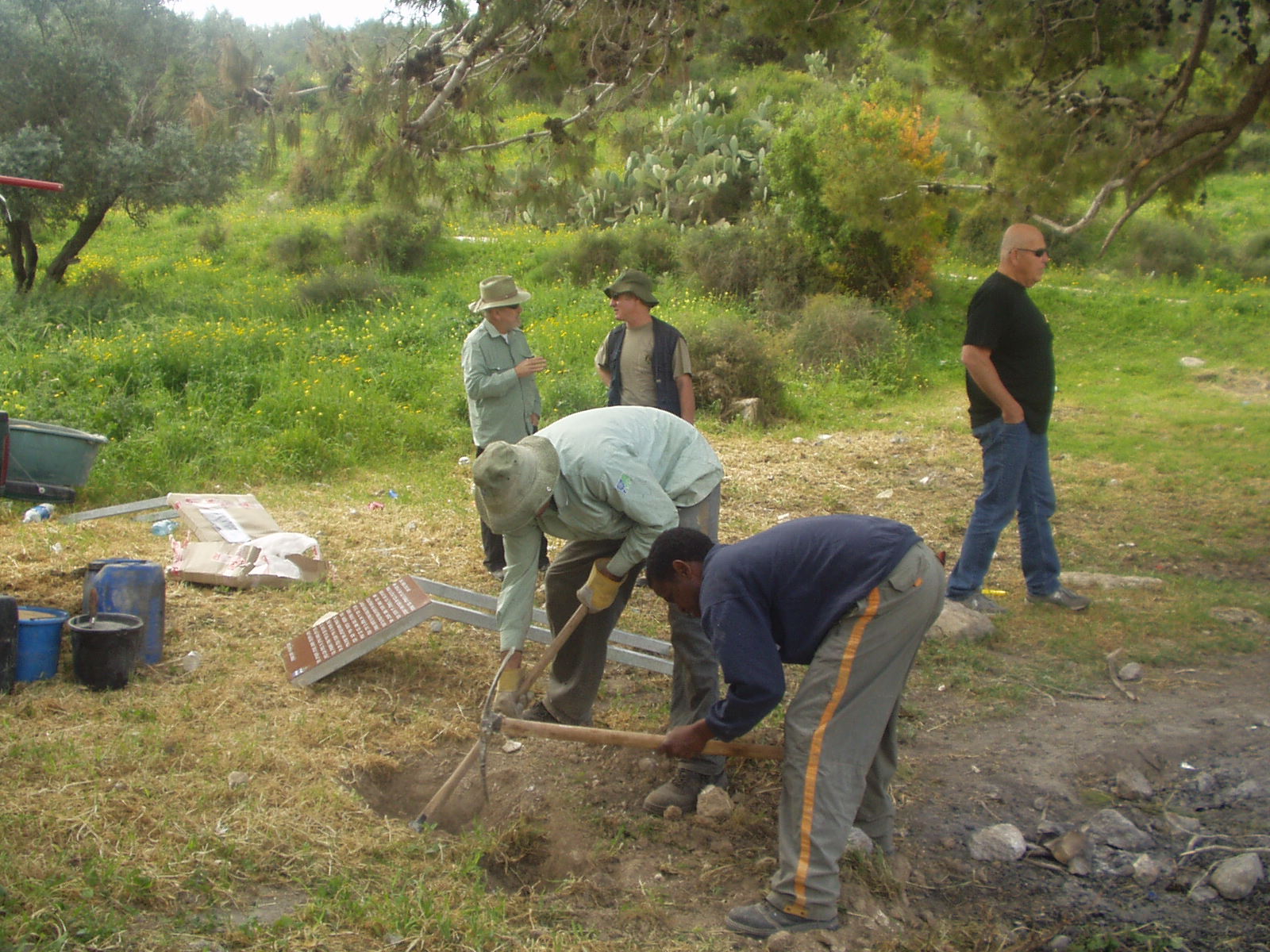
קק"ל מציבים שלטים בפארק קנדה ב-2006 בעקבות תביעה של זוכרות / JNF are posting signs at Canada Park in 2006 after Zochrot's petition
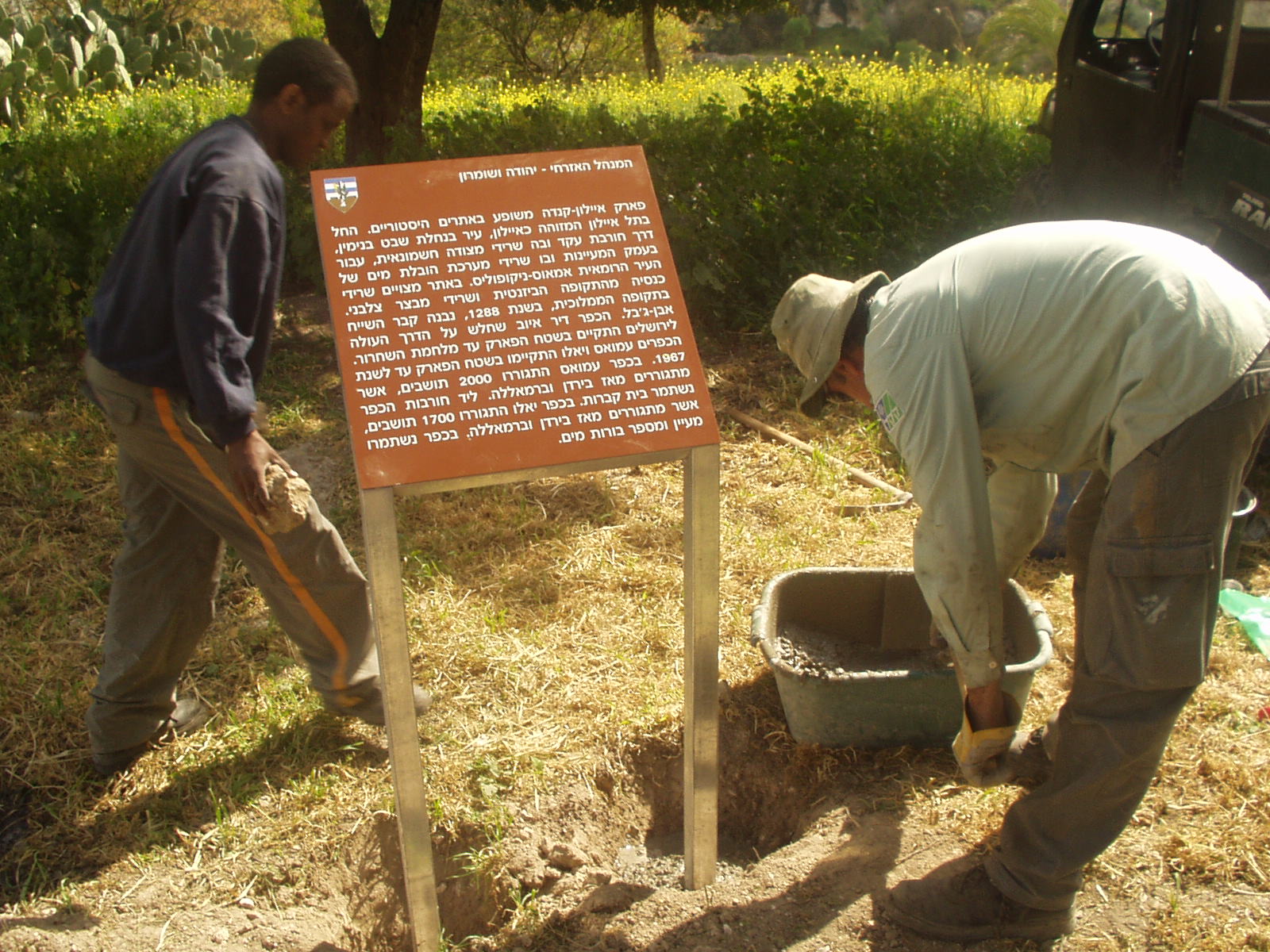
קק"ל מציבים שלטים בפארק קנדה ב-2006 בעקבות תביעה של זוכרות / JNF are posting signs at Canada Park in 2006 after Zochrot's petition
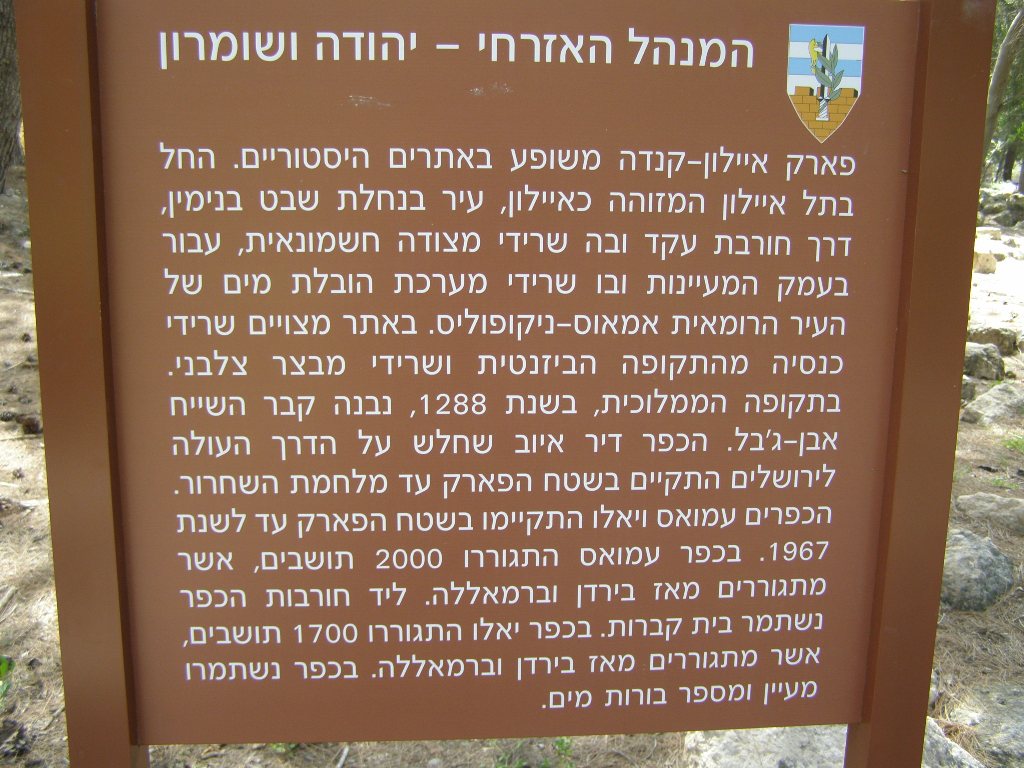
שלט שהוצב מחדש בפארק קנדה ב-2010 / A sign that was re-posted at Canada Park
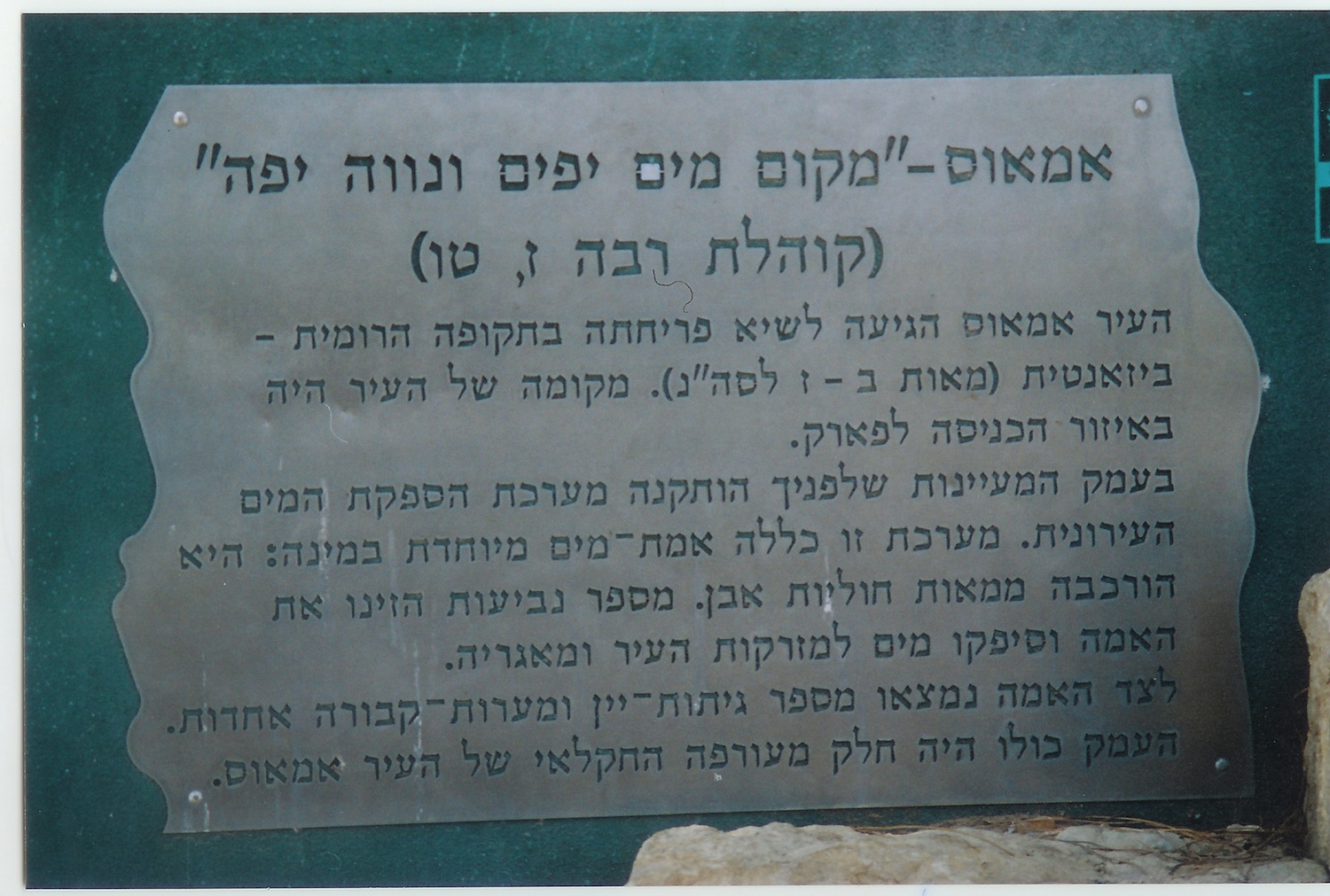
שלט טיפוסי בפארק קנדה / A tipical sign at Canada Park
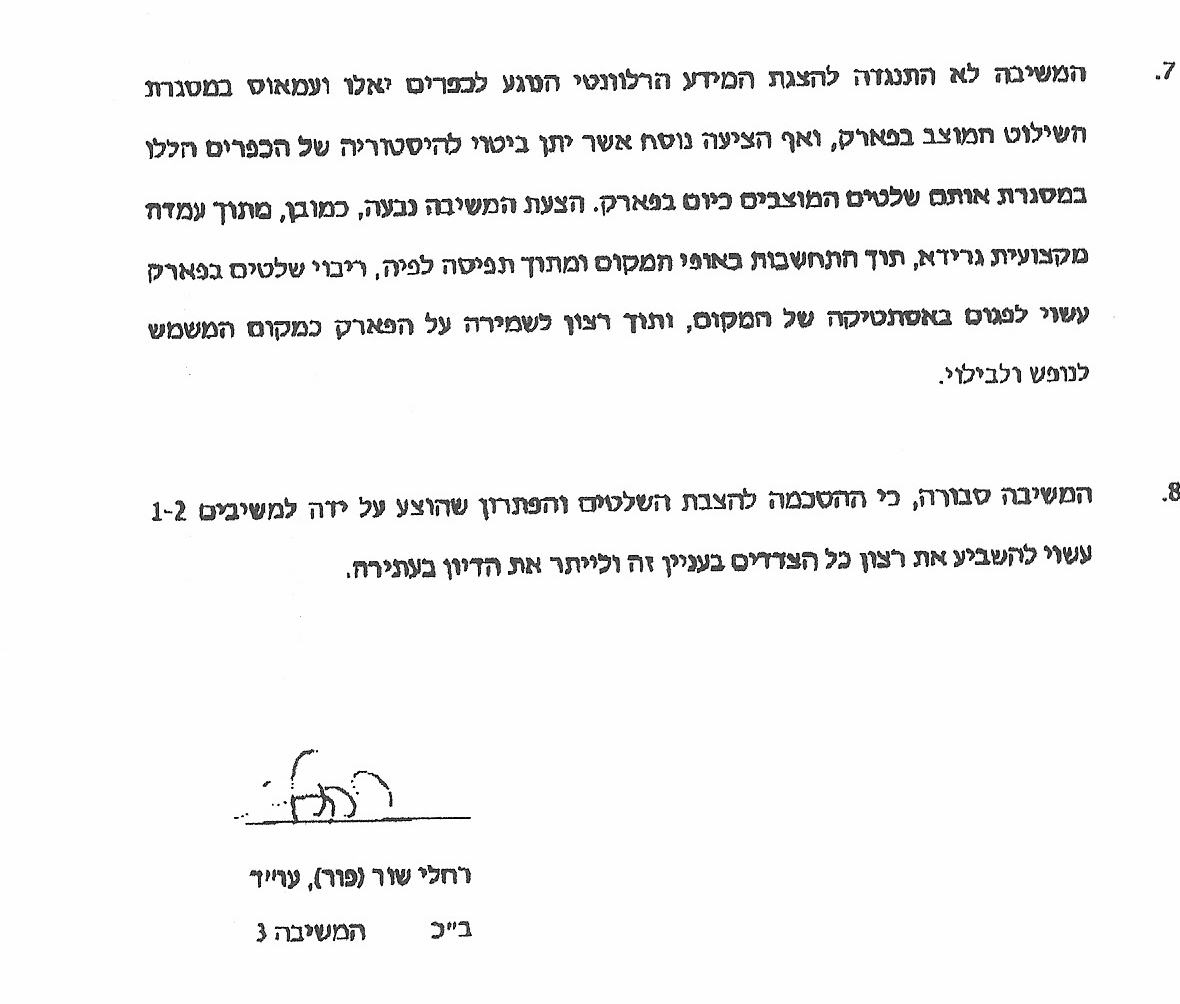
קק"ל משיבה לבג"צ שתסכים להציב שלטים ע"פ דרישת זוכרות / JNF answered the supreme court they will post signs as Zochrot demended
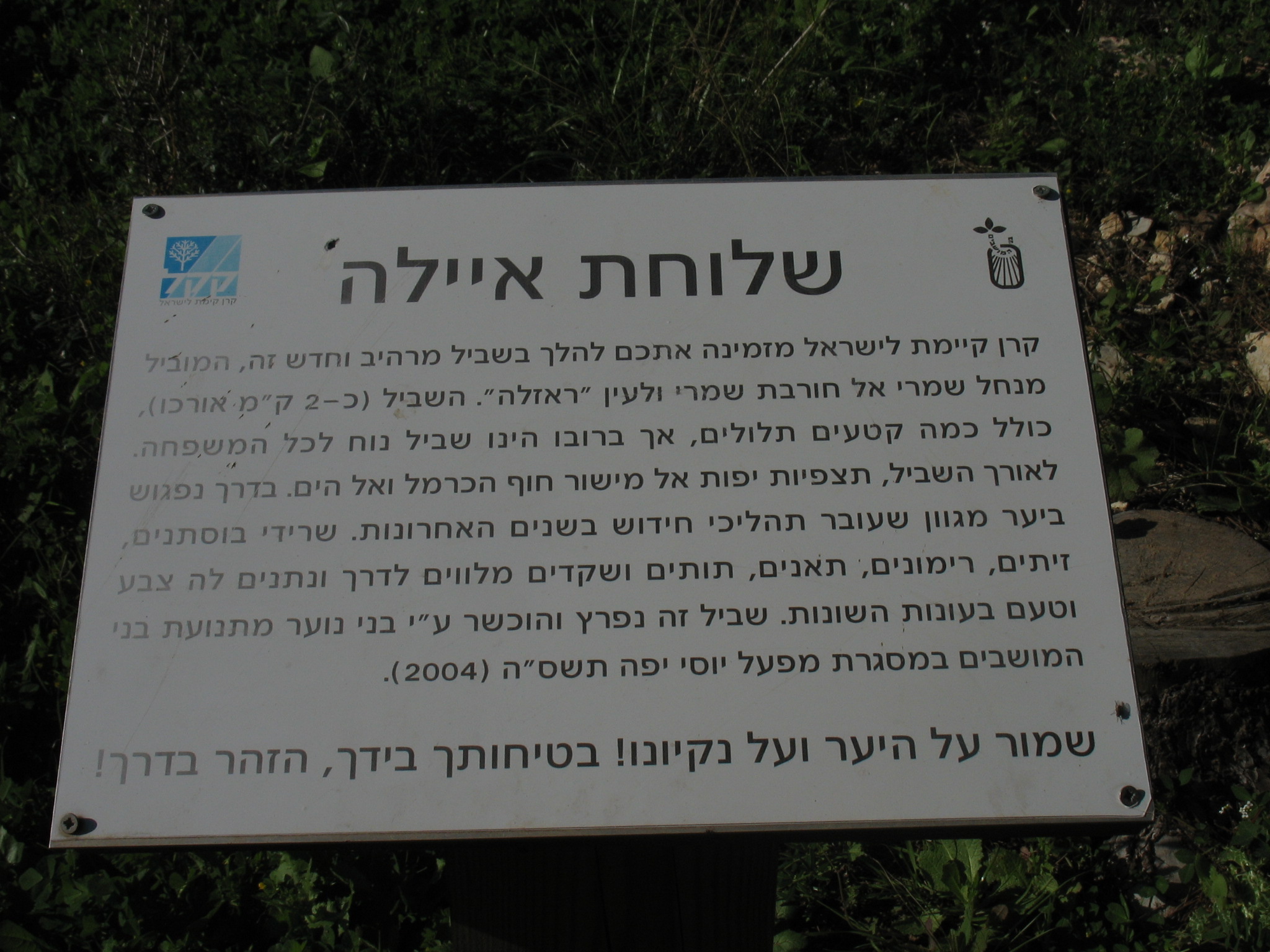
שלט עין אילה / Ayn Ayala sign
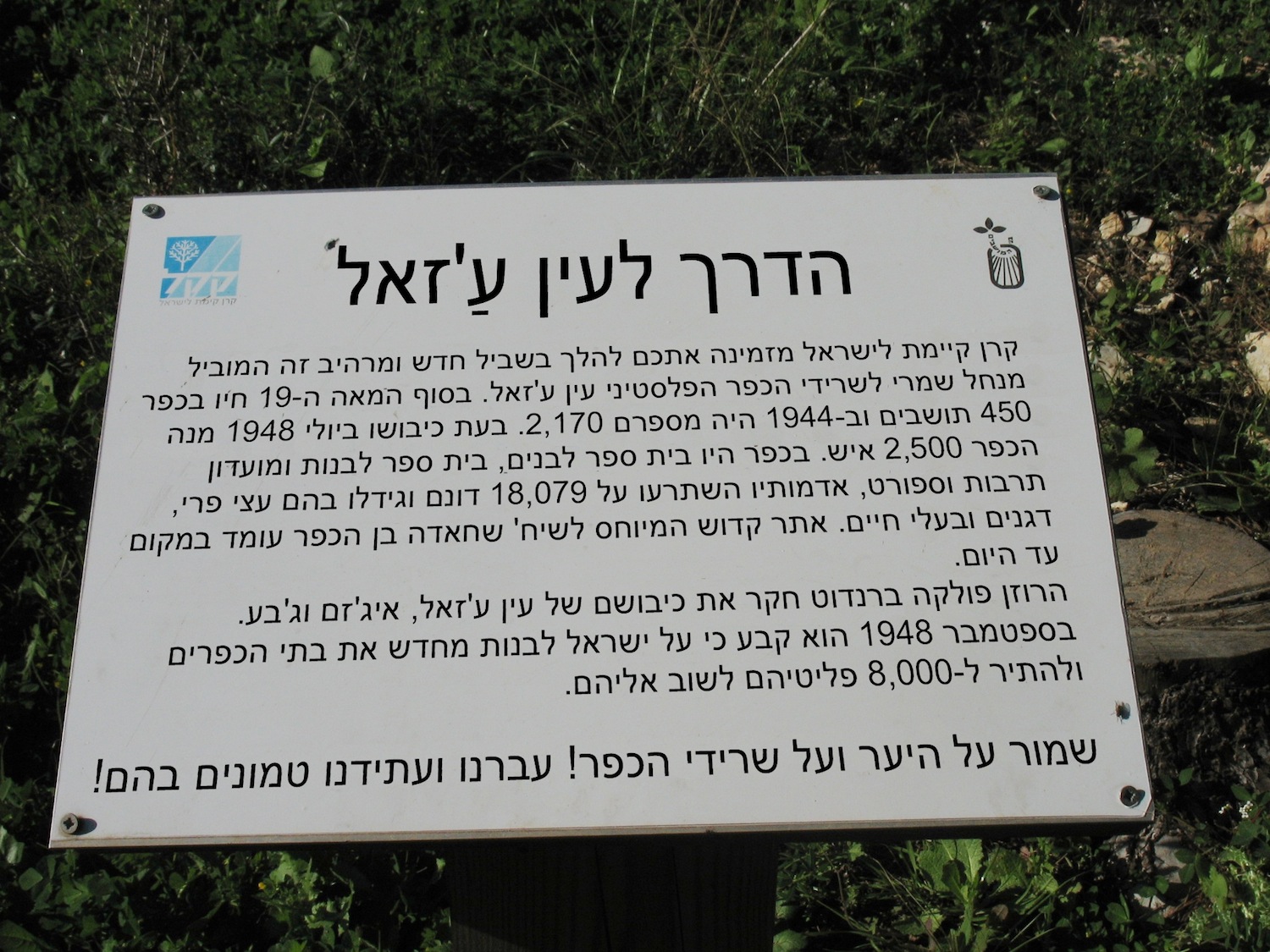
שלט חדש לעין ע'זאל / A new sign to Ayn Ghazal
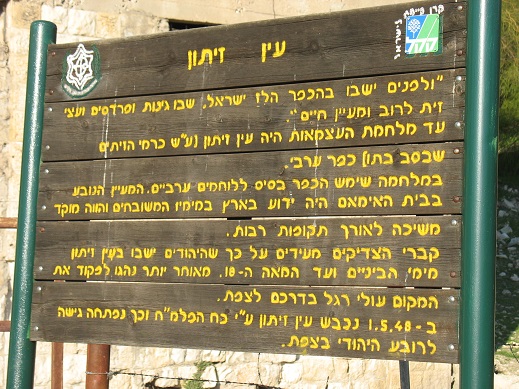
שלט ישן עין זיתון / Old sign to Ayn Zaitun
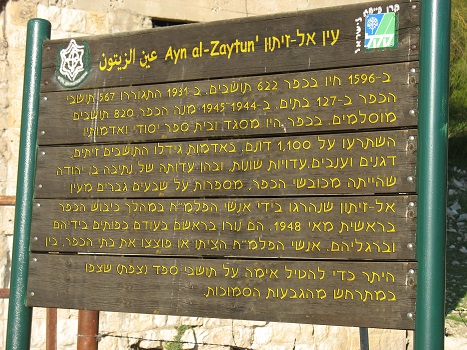
שלט חדש לעין זיתון / New sign for Ayn Zaitun
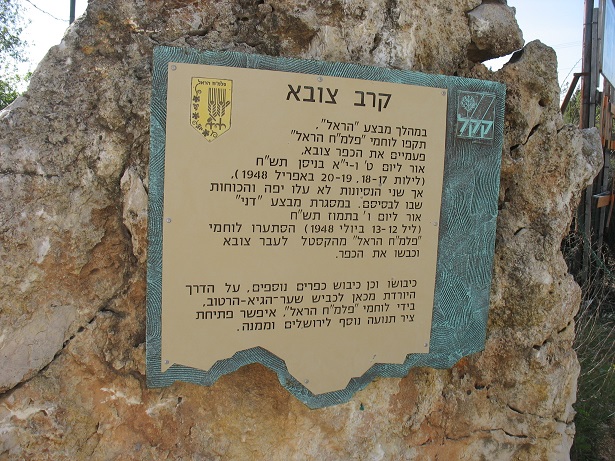
שלט לסובא / Sign Suba
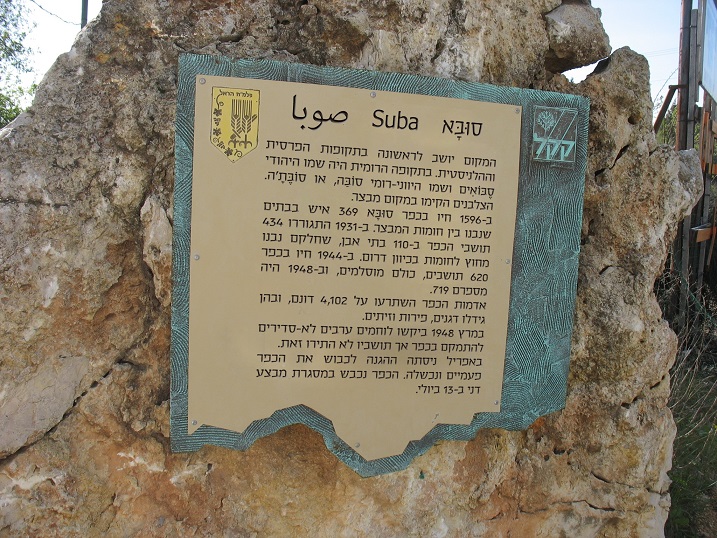
שלט חדש לסובא / New sign to Suba
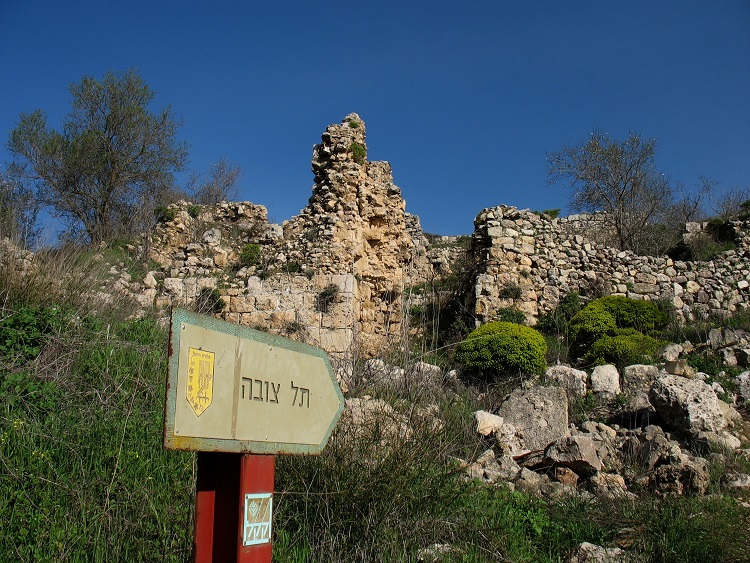
שלט הכוונה לסובא / A sign to Suba
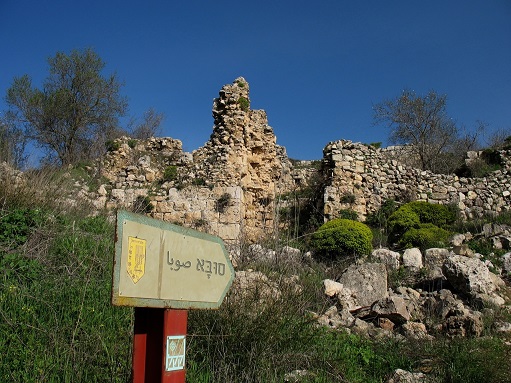
שלט חדש לכיוון סובא / A new sign to Suba
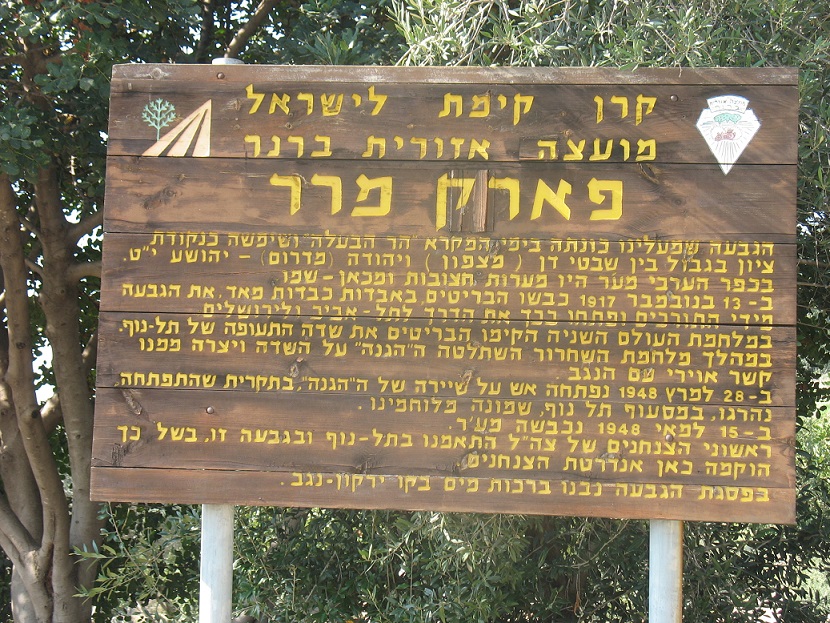
שלט ישן למרר / An old sign to Mrar
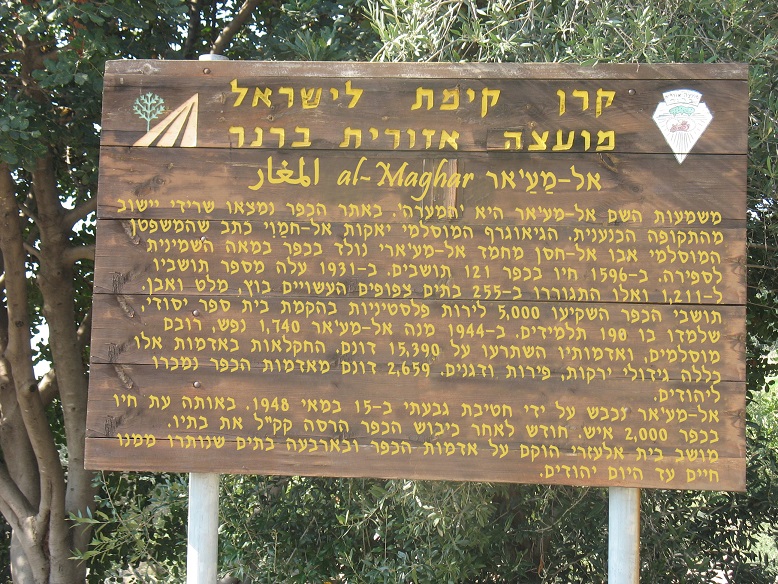
שלט חדש לאל מע'אר / A new sign to al-Maghar
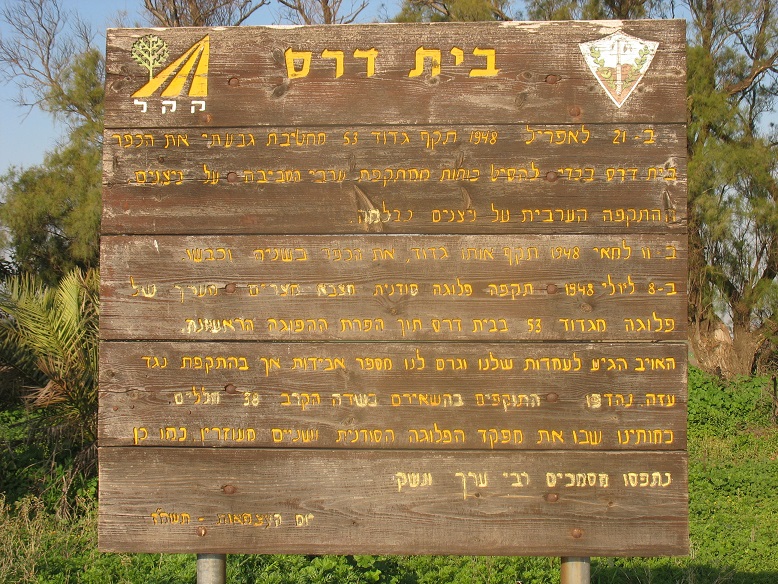
שלט ישן לבית דרס / An old sign to Beit Daras
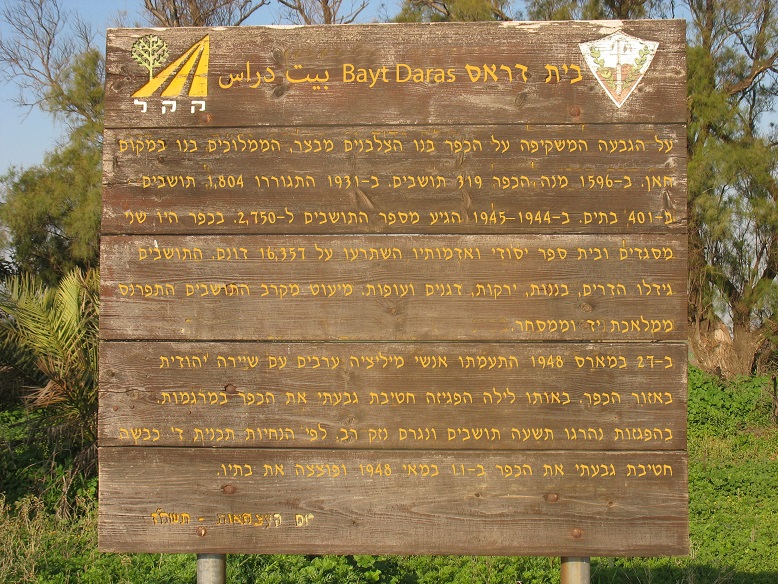
שלט חדש לבית דראס / A new sign to Bait Daras


